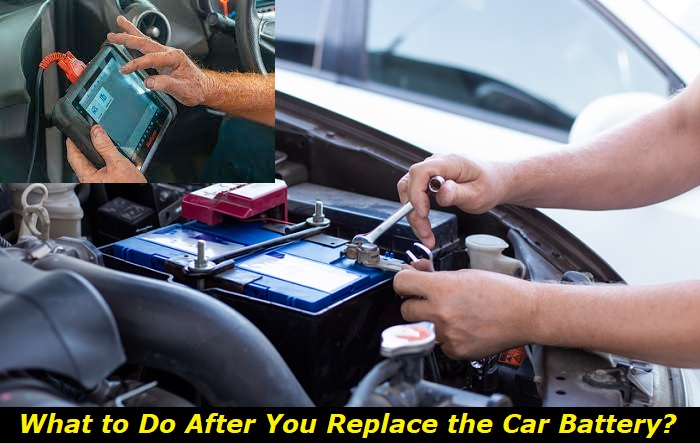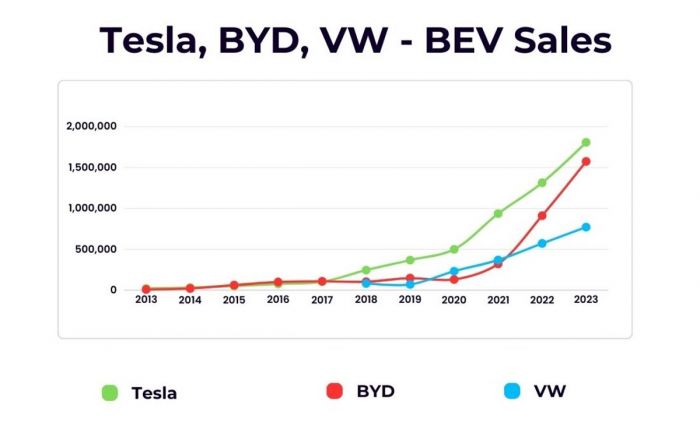Car batteries are not eternal and they have a pretty short lifespan. Their life expectancy can be three to six years depending on the type, size, and also the way you use your vehicle. In average city driving, car batteries will die much faster because they just don't get enough charging time to compensate for the loss at the engine startup. If you drive on highways a lot, the car battery will live significantly longer.
Dead car battery replacement highlights
- Critical voltage:less than 10 volts
- Average battery age:4-5 years
- Tools needed:set of wrenches
- Timeneeded:15 minutes
- If done incorrectly:electronic glitches, frying ECU, no crank-no start
- DIY fix:possible
- How much to fix?$150 - $250

When should you replace the 12V battery in your vehicle?
First of all, we should say that not all low batteries need replacement. If your battery is still fresh (younger than 4 years old) and has some juice in it, you can recharge the battery and get it back to life. Just use the proper charger and make everything that the manual says. Avoid charging the battery with a stronger current than it needs - you may just kill the 12V battery this way.
Modern chargers will tell you if the battery has no life in it anymore. Usually, safe charging takes about 8-10 hours. If your low 12V car battery takes the full charge for just a couple of hours, this is a clear indicator of a dead battery.
Here are some signs that show the death of your car battery:
- the 12V battery is dead very soon after you have recharged it with a charger;
- the vehicle shows you error messages connected to the electrical system and voltage;
- when you connect the charger to the battery, the charging doesn't start;
- the smart charger says you that the battery is dead and can't be charged;
- the battery is more or less OK when it's warm but fails right when the first cold nights come;
- you can't start your vehicle after it wasn't driven for more than three days;
- you need to ask for help with starting your car too often;
- the battery has some visual damage on it, leaks, or melts.
Whenever you notice one of these things or several of them at once, just be prepared to buy a new car battery. Be careful when choosing this thing - your vehicle needs a certain capacity, a certain current type, and also a certain size. If you install the inappropriate battery, you may damage the electrical system in your vehicle and this will lead to a very expensive repair.
If you don't know what kind of battery you should buy, contact the dealer. Official dealers will provide you with all the needed information about the type of battery you have to buy. This is more serious than it seems, actually.
How should you replace the battery in your vehicle?
Battery replacement may seem like a very simple DIY thing. Just unscrew two nuts, take the cables off the posts, and put the new battery instead of the old one. But this process has some secrets that may easily damage your vehicle if not considered.
For example, you need to know that the negative terminal should be disconnected first. Also, the positive terminal should be connected first. If you don't know this, you may cause an electrical short in your car and lose a lot of money in the end.
So, here's how you should replace the battery if you don't want to let specialists do that:
- Locate the battery in your vehicle. They are not always under the hood, sometimes batteries are hidden in the trunk or in another place.
- Turn off the vehicle and take the key off the cylinder to avoid shortcuts.
- Take the negative terminal off the battery post and place it carefully in such a way that it doesn't touch the post before you want it.
- Take the positive terminal off and ensure the cables don't touch the battery or each other.
- Locate the battery mounting if your vehicle has it and unscrew all needed bolts or nuts.
- Take the old battery off the vehicle.
- Put the new battery in the needed place and use the OEM mounting to fasten it correctly.
- Install the positive terminal and fasten the nut to make sure it holds tight on the post.
- Carefully install the negative terminal and fasten it. It may produce some sparks when it first touches the post, it's OK.
- Turn the ignition on and then start the vehicle. See if everything works correctly.
The procedure seems to be quite easy but it's dangerous in terms of the health of the electrical system in your vehicle. Also, the battery may give you a little electric shock, so you should be very careful when doing this.
So, you've done everything we told you in this guide but the vehicle doesn't start. What's wrong? The problem may be with some tricky ECU features in your vehicle that blocks the new battery from being registered in the system and used. This can mostly happen with newer cars that were made after 2015. Let's see what you can do with that.
What should you do after battery replacement in your vehicle?
In most cases, you won't need to do anything else. Just replace the battery as we've told you above and you should be good to go. But, in some vehicles, this will not be as easy and quick as you would want it to be.
Lots of new cars will block everything once you disconnect the battery. And when you install the new one or reinstall the old recharged battery, it may just fail to work correctly. So, in this case, you will need to program or register the battery before your vehicle will be able to start and go.
Here's how to do it:
- Call your dealer.
- Ask if they can register the new car battery for you.
- Arrange the time.
- Go to the dealer and have the battery registered.
Alternatively, you can ask any repair shop to do this for you. In most vehicles, you will need an OBD II scanner that has the function to program the ECU in your vehicle. Buying this scanner just for installing the new 12V battery is insane - this thing is pretty expensive.
Many drivers claim that this is just made for the profits of dealerships because the battery registering procedure doesn't make sense. And we agree with this. Manufacturers explain that the ECU will need recalibration for optimal charging of the new battery but older cars didn't need this and so it sounds somehow strange.
What will happen if you don't register the new battery?
Well, this will vary from one car to another. Mostly, you will need this battery registration procedure for European car brands like Volkswagen, Audi, BMW, Mini, etc. But recently American and Japanese brands also started doing this. They also want some money from car owners after they leave showrooms!
Here's what may happen with different cars if new batteries aren't registered:
- the cat may go into limp mode and you will be able to drive at a small speed only;
- the vehicle may refuse to start and you will need professional help there and then;
- some functions in your car may not work or may work incorrectly after you start the car;
- the battery may not charge and go dead very fast.
So, it's obviously worth registering the new battery if it's needed in your vehicle. You will get to know this from the manual or after you install the new battery and your car starts going crazy.
Prolonging the lifespan of your battery
People hate paying money for some things that should be free. Like the battery replacement in your car. So, we've prepared some tips on how you can avoid replacing your car battery for a longer time.
Firstly, you should buy high-quality batteries that have good reviews and no reports from drivers. Better pay more when you are choosing the battery brand and you will have this thing for a couple more years.
Secondly, charge your battery with a charger every 6 months or so. When we are driving in the city traffic, the battery may get little charge between engine starts. This will eventually drain all the juice out of the battery. When it's low, it will fail and ruin much faster.
Thirdly, drive your vehicle regularly. If you don't start your car for two-three weeks, the battery will gradually drain. This will lead to the sooner death of the battery. If you drive your vehicle at least once every three days, this factor will not ruin it that heavily.
Finally, check the battery's health regularly. This will help you get ready for the replacement and make the planned replacement in the dealership when your vehicle is on regular maintenance. This will at least reduce the amount of time you spend on this procedure.
About the authors
The CarAraC research team is composed of seasoned auto mechanics and automotive industry professionals, including individuals with advanced degrees and certifications in their field. Our team members boast prestigious credentials, reflecting their extensive knowledge and skills. These qualifications include: IMI: Institute of the Motor Industry, ASE-Certified Master Automobile Technicians; Coventry University, Graduate of MA in Automotive Journalism; Politecnico di Torino, Italy, MS Automotive Engineering; Ss. Cyril and Methodius University in Skopje, Mechanical University in Skopje; TOC Automotive College; DHA Suffa University, Department of Mechanical Engineering






Add comment